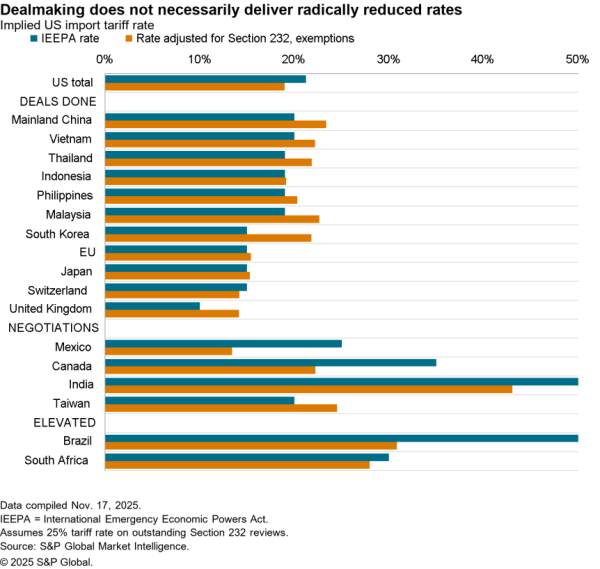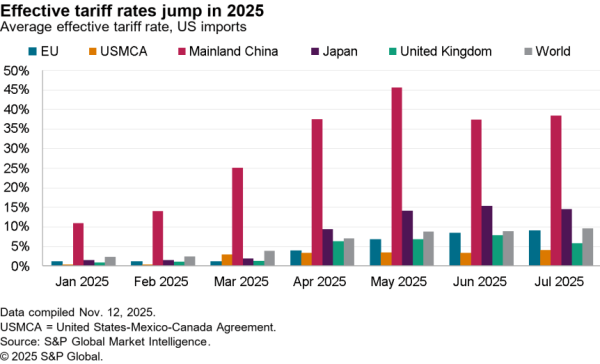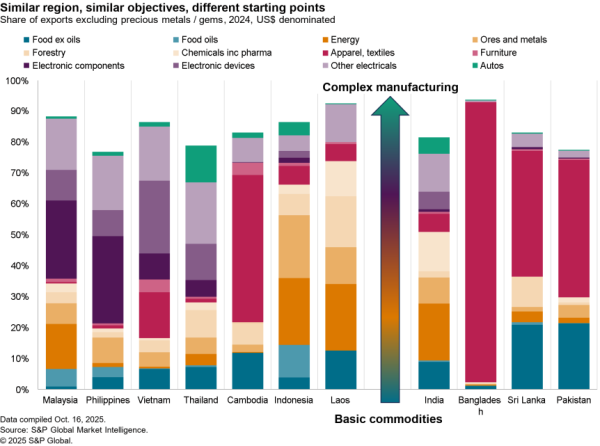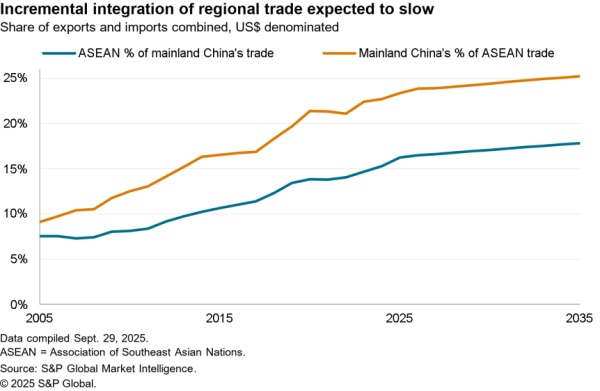Panjiva Research took part in S&P Global’s 4th Annual Munich Seminar “Essential Insights in an Evolving European Landscape” on Sep. 24. This report summarizes the key points covered and questions asked.
International trade in the European Union, expressed in terms of global exports, has lagged the global average both during 2019 and during the first three stages of the COVID-19 pandemic in 2020, culminating in a 9.3% year over year slide in exports in dollar terms in July compared to a 7.5% drip in the global average.
Panjiva’s analysis of official data exports to outside the EU fell by 11.3% year over year in July, a faster rate in June, led by a 15.9% slump in shipments to the U.K. and a 12.7% slide in shipments to the U.S. There are signs of a recovery however with a rise in shipments to the U.S. in August of 4.0% year over year.

Source: Panjiva
The U.S.-China trade war has overshadowed global trade and will likely continue in some form or another after the U.S.-elections no matter the outcome. Whether there is a second Trump administration or a Biden administration could make a meaningful difference to EU-U.S. trade relations.
Life under a Trump administration could include an extension of the recent fish-for-glasses trade deal into an agreement on aerospace tariffs. However, the EU is pushing ahead with digital taxes and a “ Green Deal” that may include carbon border taxes. Both could incite a trade war with the U.S.
A Biden administration on the other hand is likely to be more multilateral in outlook. A return of the TTIP trade deal is unlikely in the near term given recent comments from the Biden campaign that there will be a focus on fixing the U.S. economy first. However, a return to the Paris Agreement on climate change could lead in turn to a compact on environmental policy with potential implications for supply chains, particularly in steel and aluminum.
The end of current trading relations with the U.K. from January is the biggest challenge facing supply chains in Europe in the near-term. Short-term there’s likely to be stockpiling while early January may see chaos in customs arrangements based on recent government statements. The medical supplies, automotive and consumer staples sectors face the biggest risks.
The U.K. trade deal with Japan largely replicates an existing EU deal. A U.K. -CPTPP trade deal could provide a way into North America while a trade deal with the U.S. won’t be possible under a Biden administration if the Internal Markets Bill is applied as planned.
Do you have any views on the EU-Mercosur trade deal and whether it will go ahead?
The EU-Mercosur trade deal appears to be dead in the water. While it was signed over a year ago it has yet to be ratified by the EU member states. Recent reports suggest that the French government has taken exception with Brazilian deforestation, environmental and food standards. That represents a missed opportunity for the automotive sector. It’s also a note of caution for the U.K. and U.S. governments as they look to secure trade deals in the future with the EU.
If Biden is a multilateralist – what might that mean for institutions like the WTO?
The future for the World Trade Organization isn’t necessarily bleak if President Trump secures a second administration. Indeed, U.S. Trade Representative Robert Lighthizer recently outlined a series of conditions for allowing reformation of the body including its dispute settlement panel which could include a wide range of global tariff standardization.
A Biden administration could indeed be multilateralist and therefore look for ways to “fix” the WTO, though it should be noted many of Biden’s policy statements have focused on dealing with domestic economic issues first.
What are the prospects for medical supply chains especially if there’s a resurgence over the winter?
There’s little doubt that there was a shortfall of medical supplies during the initial stages of the pandemic, though it’s worth noting the U.S. has recently closed its ventilator stockpile while there’s plenty of evidence of a surge in PPE supplies. Yet, there were still plenty of examples of “medical protectionism” which have a legacy in factors such as regional manufacturing plans and multi-regional plans such as the ASEAN+3 strategy.
There are clear signs of that protectionism in EU exports of PPE until recently. Panjiva’s analysis of EU data shows that EU exports of PPE rose by 17.9% year over year in February but subsequently fell with declines of 30.6% and 28.2% in April and May respectively. The decline has continued in June with a reduction in exports to the U.S. and the rest of the world.
The U.K.’s position, with a steady decline until a 29.1% in June that may be linked to restocking, is a note of caution going into the exit from existing trade relations from January.

Source: Panjiva




